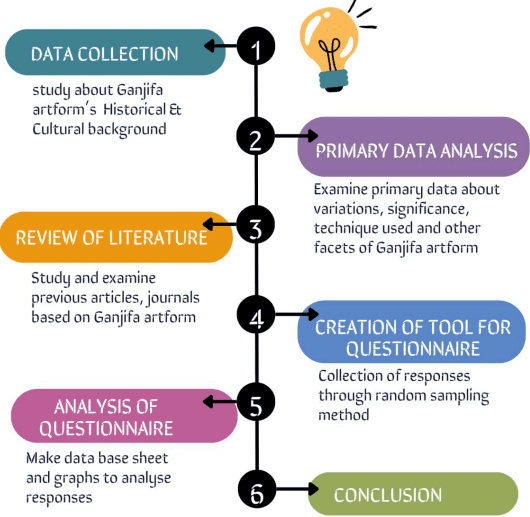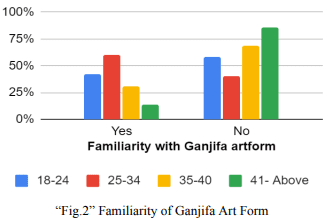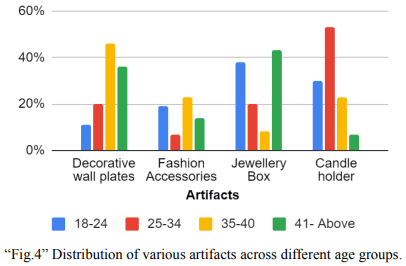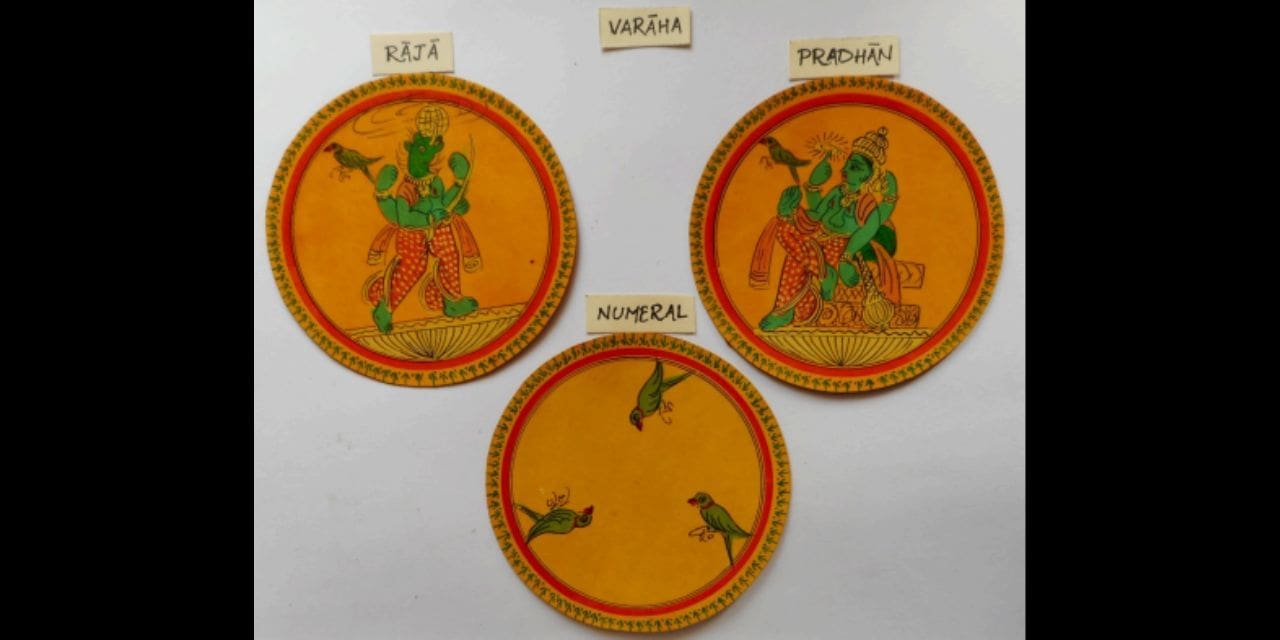By
Ms. Mansi.S.Suryawanshi (Student), Mentor Dr.Armaiti Shukla (Associate Professor),
Department of Textiles and Fashion Designing,
Sir Vithaldas Thackersey College of Home Science (Empowered Autonomous Status)
SNDT Women’s University Mumbai. Maharashtra, India
Abstract:
The card game Ganjifa, which has its origins in Persia, became well-known in India in the 16th century. The game is still played in Sindhudurg district of Sawantwadi, Maharashtra, once the capital of a territory held by the Marathas’ Bhonsle ruler. The classic Mughal playing cards featured 96 cards, eight suits, and extensive Arabic or Urdu calligraphy. The Sawantwadi group, well-known for its lacquer ware and woodworking, was eager to learn the Chitrakar community’s ancient ganjifa trade. These games’ main objective was to instruct and recount tales from sacred books and old scriptures. Representing a significant portion of cultural legacy, Ganjifa embodies age-old customs of artistry and workmanship. Therefore, in order to ensure Ganjifa’s continuous relevance and significance in contemporary India’s cultural landscape, initiatives to increase public awareness of it can help to preserve and maintain it for future generations.
Introduction
The term Ganjifa has an obscure origin. It is said that the word “ganj” comes from the Persian word “ganjifeh,” which means “playing cards.” Others claim that the name refers to treasure, treasury, or hoard. Variations of ganjifa cards included the Ramayana-style Lord Vishnu, the Navagraha or nine planets, and the Ashta Dikpala ganjifa cards, which listed the ten forms of
Mother Goddess. Traditionally, these cards are crafted using materials such as papier-mache, mother of pearl, ivory, palm leaves, fabric, and tortoise shells and are embellished with elaborate paintings that frequently feature scenes from Hindu mythology, historical events and local folklore.
The following are a few varieties of Sawantwadi Ganjifa:
Dasavatara Ganjifa: Since there were 120 Hindu players in the game, the concept was centered around Hindu culture, and they made their own suit signs. Dasavatar, which translates to mean having both human and animal forms in them, displayed Lord Vishnu’s incarnations and demonstrated himself to be opposed to evil. Fish (matsya), Parashurama (rama with axe), Kalkin, Vamana (dwarf), Varha (boar), Narishma (half human, half lion), and Buddha were among the ten incarnations.
Navagraha Ganjifa: In this version, the suits stand in for the nine Navagrahas, or heavenly bodies, in Hindu astrology. Every card has elaborate paintings or symbols related to the corresponding planet.
Ramayana Ganjifa: This set incorporates events, characters, and symbols from the Hindu epic Ramayana, which served as inspiration. Detailed paintings of Rama, Sita, Hanuman, and other well-known characters adorn each card.
Mahabharata Ganjifa: This set, like the Ramayana Ganjifa, draws inspiration from the Hindu epic Mahabharata. Krishna, Arjuna, and the Pandavas are among the figures, settings, and symbols from the famous Kurukshetra conflict that appear on the cards. Tiwari S. & Mundra S.M. (2023)
Ashta Dikpala: In particular, Ashta Dikpala Ganjifa is a game that centers around the idea of the eight directional guardians, along with Ashtadikpalas as they are known in Hindu mythology. A standard deck for this game has 120 cards, each of which represents a deity connected to one of the eight directions. The goal is to either win tricks, which is similar to winning in bridge
games, or collect sets of cards that represent particular pairings of deities. Although Ashta Dikpala Ganjifa is not as popular as it formerly was, attempts have been made to maintain both the game and the related art form.
Above are a few of the popular varieties of Sawantwadi Ganjifa cards, each of which highlights the area’s rich creative legacy and cultural significance. These cards are extremely valuable collectibles and treasured works of art because of the exquisite craftsmanship and meticulous attention to detail. (Ashtadikpala: A Rare and Unusual Set of Ganjifa Cards, n.d.)
AIMS & OBJECTIVES:-
● To study the rich cultural heritage of Ganjifa Cards.
● Analyze the creative methods, aesthetics, and materials used in the production of Ganjifa cards in various historical contexts.
● To check viability and acceptance of Ganjifa card paintings with reference to Cultural & Historical Significance, Artistic Techniques.
● To generate public awareness and engagement with Ganjifa Art, including initiatives to promote and educate the public about this traditional art form.
METHODOLOGY:-

REVIEW OF LITERATURE:-
1. Tiwari S. & Mundra S. M. (2023) says that the history of playing cards has always been wrapped in mystery or contention, with nations claiming to be their birthplace among them are China, France, Italy, Egypt, the Netherlands, Germany, and Spain. The Ganjifa card game was created with a little twist but was meant to be played by all social classes and members of the community. Only embellishment, such as the usage of gold for members of the royal family or aristocracy, and shells, ivory, or paper-based cards for regular people, was employed. Natural handcrafted colors and extremely thin brushes were used to paint the decorations.
2. With reference to Aesthetic, H. (2022b, January 6), the inhabitants of Indian kingdoms incorporated these Ganjifa cards into their customs, continuing to prepare and play them in accordance with regional traditions. These cards were manufactured and used for play across the nation at one point, with different designs and rules. But as time went on, demand decreased, limiting their production to a few locations around the nation where traditional painting techniques are still used, including Puri in Odisha, Sawantwadi in Maharashtra, Nirmal in Andhra Pradesh, Mysore in Karnataka, Bankuda in West Bengal, and a few others.
3. Author Dr. Shruti Tiwari (2023) says that there is very little data available regarding this exquisite and priceless art form known as Ganjifa because it is almost extinct. These days, the artwork is limited to tea coasters, frames, and tray sets. Due to a lack of knowledge about the art, traditional handcrafted Ganjifa cards and artwork in nations like India and Persia lost a great deal of their market value.
4. Tiwari S. & Mundra S. M. (2023) says, the critics of Ganjifa art have almost little hope left for the future. The current younger generation is disinclined to work because it takes a lot of time and they receive no motivation. Modernization of the theme while preserving its traditional meaning and giving it a fresh appearance to expand its potential for international display.
5. Chawan, S. (2021, July 22) says, in addition to crafting playing cards, craftsmen were also producing other items in the Ganjifa style. Even though the natural colors have been replaced with poster colors and the fabric, ivory, and royal shells have been replaced with plain paper, the products are still packaged in exquisite Ganjifa-style wooden boxes that have been meticulously hand-painted. Today, many sets are designed, such as Dashavtara, Navgraha, Shivaji Maharaj, Mughal Ganjifa, and Darchitri. Since most individuals these days are not familiar with the game, the majority of orders are typically held in for
collecting or framing. However, the palace gives you a guidebook in addition to the deck of cards so you can understand the game’s rules.
RESULT AND DISCUSSION:-
This survey includes questions about knowledge, admiration, interest in preservation, and recommendations for promoting Ganjifa art. A wide range of female respondents (i.e. 68 responses) from various age groups, backgrounds, and places are included in the sample. Learn important information about their awareness, preferences, and impressions of this historic art form. Use this information to inform initiatives for its promotion and preservation. Provide suggestions for promoting Ganjifa art among female audiences, raising understanding and appreciation of its cultural relevance, and developing preservation plans based on the survey results. Think about ideas like partnerships with artists and cultural organizations, online platforms, cultural events, and educational programs.
Familiarity of Ganjifa Art Form among people:-
With age, one’s familiarity with Ganjifa usually improves. The age group of 25 to 34 exhibits the highest level of knowledge, with 60% of respondents claiming awareness. Older age groups (i.e. 35-40 and also above 41 age group) show a progressive decline in familiarity. This suggests that only few people might be less exposed to or aware of Ganjifa. This implies that those who have had more interaction with cultural traditions and artistic mediums may be more exposed to Ganjifa art. This could be because of changes in cultural interests, curricula, or accessibility to traditional art forms.
The diagram (Fig.2) presents the extent of familiarity that people of various ages have with Ganjifa Art, a traditional art form. It indicates the proportion of people who are aware of it (“Yes”) and those who are not (“No”) with correspondence to different age groups.

Familiarity with various facets of Ganjifa Artform –
The supplied data illustrates the degree of familiarity that different age groups have with different facets of Ganjifa art. In most categories, (with reference to Fig. 3) it seems that those in the age range of 25 to 34 some are familiar with most aspects of Ganjifa art, with people in the age range of 41 and above i.e. 57% people following closely behind. Overall, the age range of 18 to 24 exhibits the least familiarity.
This implies that older age groups might have a better comprehension of the historical and cultural setting in which Ganjifa art developed. Exposure via education, cultural heritage, or involvement may be contributing factors. Most respondents i.e. more than 50% (all age groups combined) choose “None of the Above,” which suggests that they are not familiar with any particular facet of Ganjifa art. This points to a possible avenue for educational programs that are meant to introduce and promote Ganjifa art and its different facets to larger audiences.
“Fig.3” An overview related to the different components across different age groups.
CHS- Cultural & Historical Significance
AT- Artistic Techniques
MU- Materials Used- papier-mache, palm leaves, cloth, etc.
RV- Regional Variations
MU- Motifs-Dashavatara,Navagraha,Lord Vishnu, etc
NA- None Of Above
The Acceptance of products made using Ganjifa artform motifs-
The information provided (Fig.4) demonstrates preferences for distinct artifacts among various age groups. According to this trend, older age groups could place a higher importance on ornamental home décor than do younger generations. Due to their affinity for using accessories to express personal style and their fashion-forward outlook, 19% of people from 18 to 24 age
group are extremely fond of fashion accessories.
In general, the information shows how diverse tastes among various age groups have impacted a range of lifestyle decisions, cultural influences, and generational patterns. Businesses and artists may find it useful to know these preferences in order to properly target particular populations with their products. It also emphasizes how crucial it is for designers and marketers of artifacts and ornamental articles to adjust to changing consumer tastes and preferences.

The preservation and value of Ganjifa artform:-
The responses from a range of age groups about promoting and conserving Ganjifa art are shown in the pie diagram (Fig.5). When asked to peoples whether Ganjifa Art should be supported and protected going forward the majority of respondents have positive opinions on its continuation. The promotion and preservation of Ganjifa art receives considerable support from people of all ages.
This shows that respondents of all ages generally acknowledge the artistic and cultural significance of Ganjifa art. This suggests that there is a chance to use outreach and education campaigns to spread the word about Ganjifa art and its importance and win over those respondents who were unsure to support it. To introduce people with the background, methods,
and importance of Ganjifa art , plan educational events, workshops, and demonstrations at community centers, universities, and educational institutions.

CONCLUSION:-
Ganjifa art, an ancient art form, has potential for development and appreciation. Educating and involving younger generations can help preserve and promote its cultural legacy. The majority of people are not aware about any specific aspect of Ganjifa art. This suggests a potential direction for educational initiatives aimed at presenting and promoting Ganjifa art and its various aspects to wider audiences. Utilizing digital platforms, cultural activities, and interactive experiences can help preserve Ganjifa’s legacy. Strong support from both younger and older age groups suggests intergenerational cooperation in preserving and promoting Ganjifa art. This approach can help raise Ganjifa arts profile and foster appreciation among different age groups. More projects, knowledge exchange amongst individuals of varying ages, as well as mentorship, may contribute
to the survival and vitality of Ganjifa art in the next few years. To sum up, the information emphasizes how critical it is to keep up the work of promoting and conserving Ganjifa art for people of the coming era. Organizations may work together to ensure an ongoing existence and recognition of this priceless cultural legacy by encouraging widespread support and involvement.
ACKNOWLEDGEMENT
My instructor, Associate Professor Dr. Armaiti Shukla, who is also the head of department, has my sincere gratitude. The chance to work on this project was provided by Sir Vithaldas Thackersey College of Home Science (Empowered Autonomous Status), which also assisted me in conducting extensive study that deepened my understanding of culture. In addition, I would
want to express my gratitude to Dr. Jagmeet Madan Mam for providing me this chance and inspiring me to put my all into this effort.
BIBLIOGRAPHY:-
1. Ganjifa art – dr pramila lochan. (n.d.-b). Dr Pramila Lochan.
2. Admin. (2023, October 30). Ganjifa and the Sawantwadi Palace: Reviving a royal legacy. Tamarind Global.
3. Shubhangi. (2016, January 28). Introduction. D’Source.
4. Chawan, S. (2021, July 22). Ganjifa – A royal deck of artestic Cards (Sawantwadi). Caleidoscope | Indian Culture, Heritage.
5. Adams, A. (n.d.). 0101p Ganjifa_Cards_Sawantwadi.pdf. Scribd.
6. Rajasthan Studio. (2022, May 4). Ganjifa Art and Cards: A Brief history.
7. Wovensouls. (2023, June 3). Ganjifa playing cards – art of Sawantwadi. WOVENSOULS Antique Textiles & Art Gallery.
8. Jiten, M. &. (2022, August 10). Sawantwadi Maharashtra: Five Things You Most Likely Didn’t Know About this Place.
9. Aesthetic, H. (2022, January 6). Ganjīfa – hindu aesthetic – Medium.
10. Hazarika, T. (2019, July 11). Project upon Ganjifa Card [Slide show].
11. Sawantwadi Palace Boutique Art Hotel. (n.d.-b).
12. Goyal, A. (2023, April 13). Sawantwadi – Art Mart of Konkan Coast, Maharashtra. Inditales.
13. Bhatia, K., & Payne, S. (2023, October 4). Sawantwadi Palace’s heritage restoration is inspired by ganjifa, a Persian card game. Architectural Digest India.

